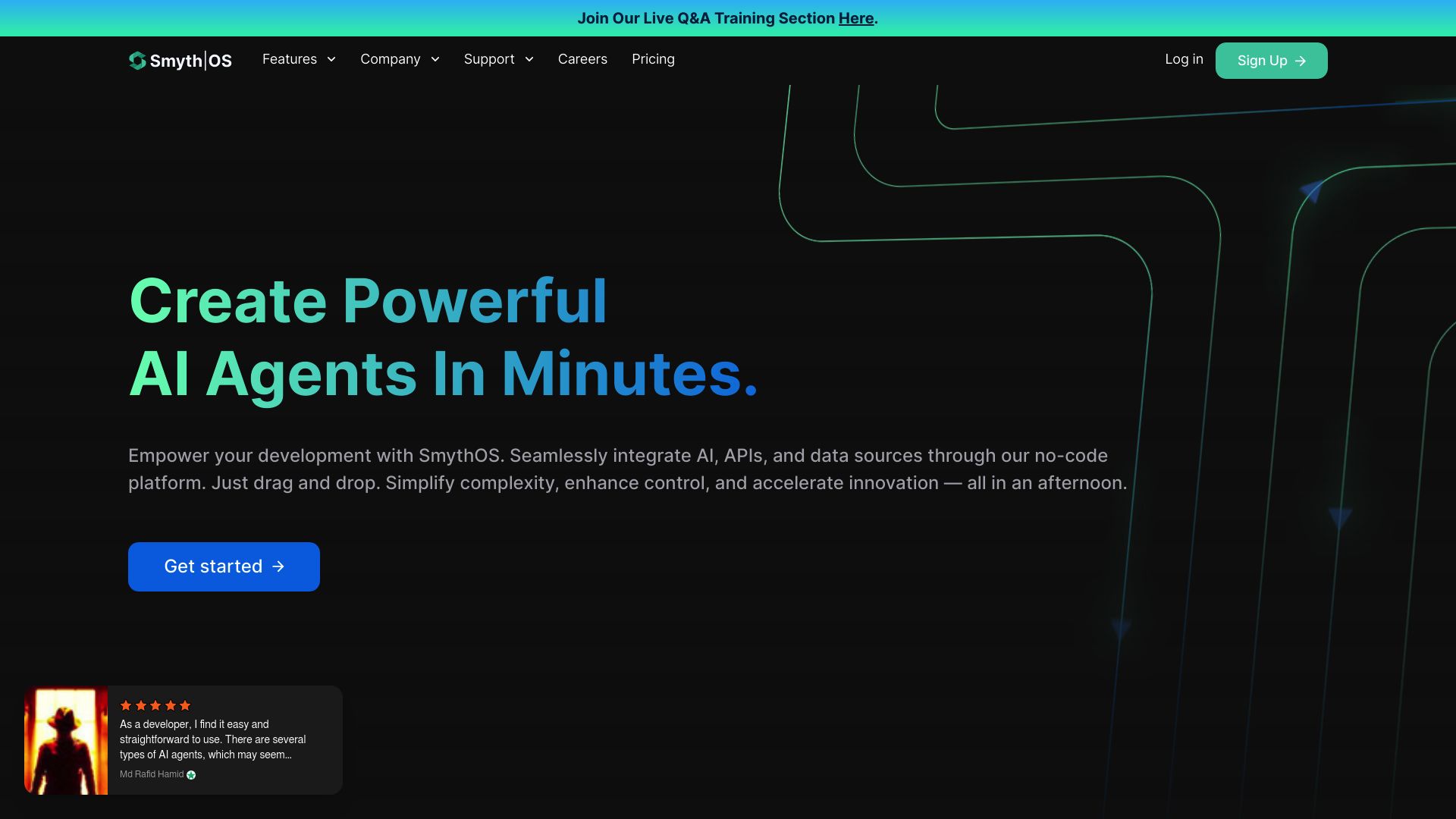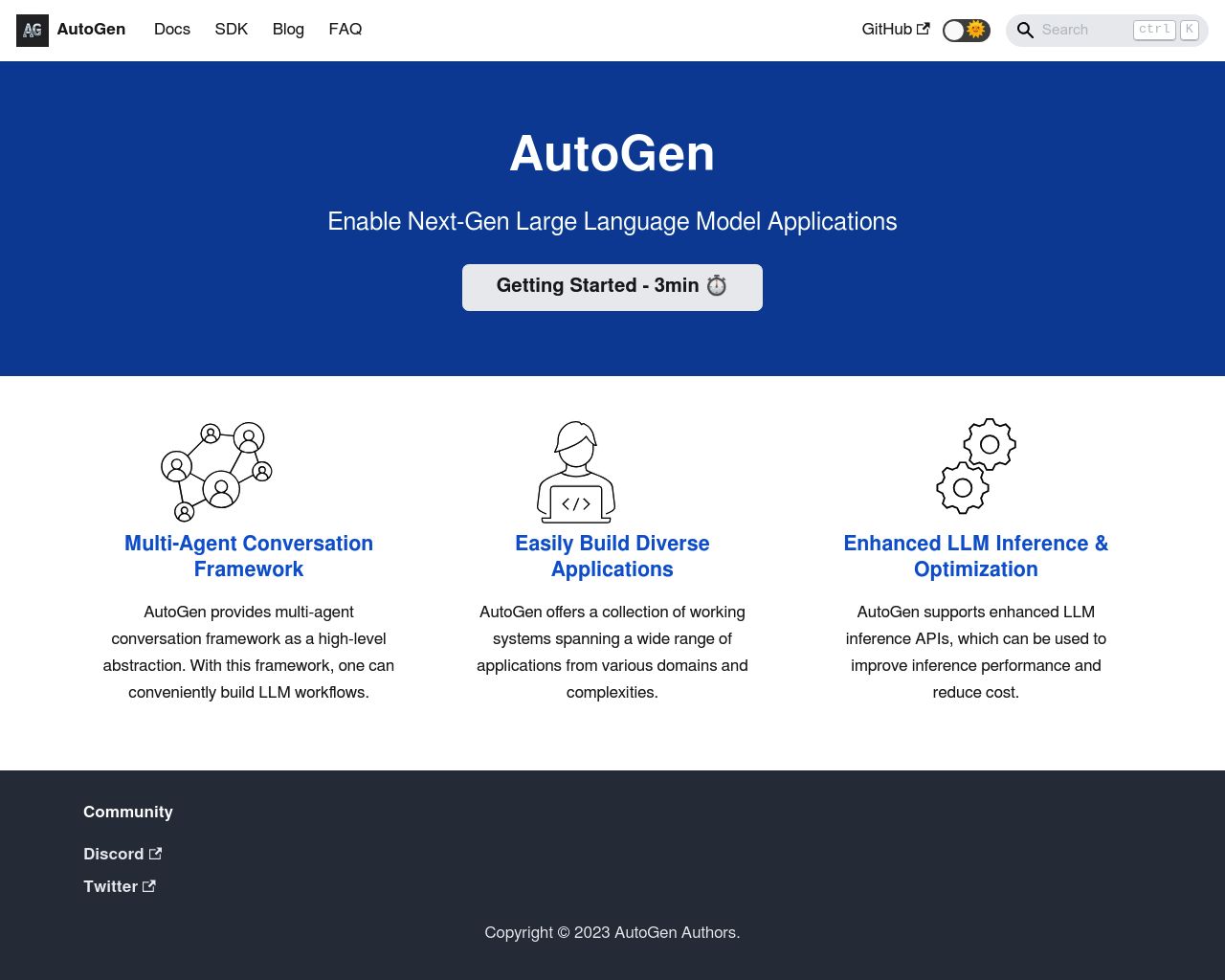Comparing SmythOS and AutoGen: A Comprehensive Analysis of Two Leading Companies
AI agent development platforms revolutionize how businesses harness advanced technologies. SmythOS and AutoGen represent two powerful solutions in this rapidly evolving field, each offering unique approaches to creating and deploying AI agents. This comparison explores the key features, strengths, and limitations of both platforms, helping you determine which best suits your organization’s needs. We’ll examine their core functionalities, ease of use, integration capabilities, and potential applications across various industries. Whether you’re a developer seeking powerful tools for complex AI systems or a business leader looking to streamline operations with AI, this analysis provides valuable insights to guide your decision-making process.
SmythOS Overview
SmythOS revolutionizes AI agent development with its powerful, user-friendly platform. We’ve designed our system to empower users of all skill levels to create, deploy, and manage sophisticated AI agents effortlessly.
Our drag-and-drop interface stands at the core of SmythOS, enabling rapid development of complex AI workflows without extensive coding knowledge. This visual approach democratizes AI creation, allowing businesses to harness advanced technologies quickly and efficiently.
SmythOS revolutionizes AI agent development with its powerful, user-friendly platform… empowering users of all skill levels to create, deploy, and manage sophisticated AI agents effortlessly.


SmythOS excels in versatility, offering seamless integration with numerous data sources, APIs, and AI models. Our platform supports deployment across multiple environments, including production and development servers. This flexibility enables users to create chatbots, apps, APIs, and plugins with minimal friction, adapting to diverse business needs.
SmythOS excels in versatility, offering seamless integration with numerous data sources, APIs, and AI models… enabling users to create chatbots, apps, APIs, and plugins with minimal friction.
A standout feature of SmythOS is our extensive integration ecosystem. We support a wide range of AI models and tools, including pre-built API integrations with popular services like Slack, Trello, GitHub, and Stripe. This comprehensive approach ensures that our users can leverage the full potential of AI technology within their existing workflows.
We prioritize scalability and security in SmythOS. Our platform is designed to handle enterprise-level deployments while maintaining robust data protection measures. We offer features like data encryption, OAuth support, and customizable security settings to ensure that your AI agents operate in a safe, controlled environment.
SmythOS represents the future of AI-driven automation and collaboration. We’ve created an advanced operating system that brings AI functionalities to your fingertips, enabling you to create, deploy, and manage AI agents with unparalleled ease and efficiency. Our goal is to transform the digital workspace, empowering businesses to innovate and optimize their operations rapidly through the power of AI.
AutoGen Overview
AutoGen empowers developers to create sophisticated Large Language Model (LLM) applications through multi-agent conversations. This open-source framework orchestrates customizable agents that interact with each other, LLMs, tools, and humans to tackle complex tasks.


AutoGen’s core strength lies in facilitating autonomous multi-agent conversations. These agents collaborate to perform tasks independently or with human input, adapting to diverse use cases. The framework optimizes LLM performance through enhanced inference capabilities, including tuning, caching, error handling, and templating. This maximizes the utility of powerful models like ChatGPT and GPT-4.
AutoGen empowers developers to create sophisticated Large Language Model (LLM) applications through multi-agent conversations.
Developers can tailor AutoGen’s conversable agents to specific task requirements, integrating LLMs, human inputs, and various tools. The platform supports both fully autonomous operations and human-in-the-loop problem-solving, offering flexibility for applications where human oversight is crucial. AutoGen has demonstrated effectiveness across a wide range of applications, from automated task solving and code generation to continual learning and complex problem-solving in group chats.
For developers, AutoGen provides essential debugging tools and logging functionalities for API calls, facilitating the diagnosis and optimization of LLM-based systems. The framework also includes EcoOptiGen, a cost-effective technique for tuning large language models, underlining its focus on enhancing LLM efficiency and effectiveness. While AutoGen offers powerful capabilities, users should carefully consider their specific needs and technical expertise when evaluating its suitability for their projects.
Feature Comparison
SmythOS and AutoGen offer distinct approaches to AI agent development, with SmythOS providing a more comprehensive and user-friendly platform. While AutoGen focuses on facilitating multi-agent conversations for Large Language Model applications, SmythOS delivers a broader range of tools and capabilities for creating versatile AI agents.
In terms of core components, SmythOS outshines AutoGen with its intuitive drag-and-drop visual builder and no-code editor. These features democratize AI development, allowing users of all skill levels to create sophisticated agents without extensive coding knowledge. AutoGen, while powerful, requires more technical expertise to implement effectively.
Security is another area where SmythOS demonstrates superiority. We offer robust data encryption, OAuth support, and customizable security settings, ensuring that AI agents operate in a safe, controlled environment. AutoGen’s documentation does not highlight comparable security features, potentially leaving users to implement their own security measures.
Feature Comparison Table
| SmythOS | AutoGen | ||
|---|---|---|---|
| CORE FEATURES | |||
| Visual Builder | ✅ | ❌ | |
| No-Code Options | ✅ | ❌ | |
| Agent Work Scheduler | ✅ | ❌ | |
| SECURITY | |||
| Constrained Alignment | ✅ | ❌ | |
| IP Control | ✅ | ❌ | |
| COMPONENTS | |||
| Data Lakes | ✅ | ❌ | |
| DEPLOYMENT OPTIONS (EMBODIMENTS) | |||
| Staging Domains | ✅ | ❌ | |
| Production Domains | ✅ | ❌ | |
| Deploy as Scheduled Agent | ✅ | ❌ | |
| DATA LAKE SUPPORT | |||
| Hosted Vector Database | ✅ | ❌ | |
| Sitemap Crawler | ✅ | ❌ | |
| YouTube Transcript Crawler | ✅ | ❌ | |
Conclusion
SmythOS and AutoGen offer powerful AI agent development capabilities, each with unique strengths. SmythOS excels with its user-friendly drag-and-drop interface and comprehensive feature set, making AI development accessible to users of all skill levels. Our platform supports a wide range of integrations, deployment options, and security features, providing a versatile solution for businesses seeking to leverage AI technology.
AutoGen shines in facilitating multi-agent conversations and enhancing LLM performance, particularly useful for developers focused on complex LLM applications. However, it requires more technical expertise to implement effectively.
For most users, SmythOS provides the ideal balance of power, flexibility, and ease of use. Our platform’s intuitive visual builder, extensive integration ecosystem, and robust security measures make it the superior choice for businesses looking to rapidly innovate and optimize their operations through AI.
We invite you to explore our diverse range of AI-powered agent templates and experience the transformative potential of SmythOS. Create a free SmythOS account today and join the AI revolution, with no time limit and a 30-day money-back guarantee. Discover how SmythOS can empower your business to create, deploy, and manage sophisticated AI agents with unparalleled ease and efficiency.
Last updated:
Disclaimer: The information presented in this article is for general informational purposes only and is provided as is. While we strive to keep the content up-to-date and accurate, we make no representations or warranties of any kind, express or implied, about the completeness, accuracy, reliability, suitability, or availability of the information contained in this article.
Any reliance you place on such information is strictly at your own risk. We reserve the right to make additions, deletions, or modifications to the contents of this article at any time without prior notice.
In no event will we be liable for any loss or damage including without limitation, indirect or consequential loss or damage, or any loss or damage whatsoever arising from loss of data, profits, or any other loss not specified herein arising out of, or in connection with, the use of this article.
Despite our best efforts, this article may contain oversights, errors, or omissions. If you notice any inaccuracies or have concerns about the content, please report them through our content feedback form. Your input helps us maintain the quality and reliability of our information.
